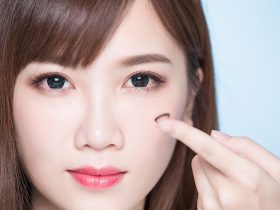In the world of beauty and Jaw aesthetics, the jawline has emerged as a defining feature that influences how we perceive attractiveness. From chiseled profiles in Hollywood stars to the growing popularity of non-surgical procedures aimed at enhancing this area, the jawline plays an undeniable role in shaping societal standards of beauty. But what is the science behind this fascination? Why does facial structure, particularly the jawline, hold such sway over our perceptions of beauty? This article delves into the intricate relationship between jawline aesthetics, human biology, cultural norms, and psychological preferences.
The Anatomy of the Jawline: A Foundation for Attraction
To understand why the jawline matters so much, it’s essential to first explore its anatomy. The jawline refers to the lower part of the face, extending from the chin to the angle of the jaw. It is shaped by several key elements, including the mandible (jawbone), subcutaneous fat distribution, and muscle tone. These components work together to create either a sharp, well-defined contour or a softer, less pronounced curve.
From an evolutionary perspective, the jawline serves as a visual cue for health, vitality, and even genetic fitness. For instance, studies suggest that a strong, angular jawline in men is often associated with higher testosterone levels, which are linked to physical strength and reproductive capability. Conversely, women with softer, more tapered jawlines are perceived as youthful and feminine due to their alignment with estrogen-influenced traits like smoother skin and delicate bone structures.
Facial symmetry also plays a crucial role in how we interpret the jawline. Symmetrical faces are generally considered more attractive because they signal good health and developmental stability during growth. A balanced jawline contributes significantly to overall facial harmony, making it a focal point in aesthetic evaluations.
Cultural Influences on Jawline Preferences
While biological factors provide a universal framework for understanding jawline aesthetics, cultural influences further shape our ideals of beauty. Different societies have historically celebrated varying types of facial structures based on prevailing values and trends.
For example, ancient Greek sculptures idealized proportionate features, emphasizing a defined yet natural-looking jawline as part of the “Golden Ratio” – a mathematical formula believed to represent perfect beauty. In contrast, some Asian cultures traditionally favored rounder, softer faces, reflecting ideals of gentleness and prosperity.
Modern media has played a pivotal role in amplifying certain jawline aesthetics. Celebrities like Brad Pitt, Angelina Jolie, and Zendaya showcase sharply contoured jaws that align with contemporary Western beauty standards. Social platforms like Instagram and TikTok have further propagated these ideals, leading to widespread interest in achieving similar looks through makeup techniques, dieting, exercise, or cosmetic interventions.
However, globalization has blurred these distinctions, creating a hybrid set of beauty norms that transcend geographical boundaries. Today, many people aspire to a universally appealing combination of sharp angles and smooth curves, regardless of their cultural background.
Psychological Insights: Why Do We Prefer Defined Jawlines?
Our preference for well-defined jawlines isn’t merely superficial; it stems from deep-rooted psychological mechanisms tied to survival instincts. Humans are naturally drawn to faces that appear healthy and capable of reproduction – qualities that can be inferred from specific facial characteristics.
Research indicates that individuals with prominent jawlines are often perceived as more competent, trustworthy, and dominant. In professional settings, these attributes translate into leadership potential, which explains why politicians, CEOs, and public figures frequently exhibit strong jawlines. Similarly, romantic partners with clear jawlines may be subconsciously viewed as better providers or protectors, aligning with ancestral mate-selection strategies.
Interestingly, the impact of the jawline extends beyond gender-specific associations. Both men and women benefit from having a sculpted jawline, albeit for slightly different reasons. Men with defined jawlines exude masculinity and authority, while women with refined jawlines project elegance and sophistication. This dual appeal underscores the versatility of the jawline as a marker of beauty across sexes.
Technological Advances in Enhancing Jawline Aesthetics
As demand for sharper jawlines grows, technological innovations have made it easier than ever to achieve desired results without resorting to invasive surgery. Non-surgical treatments such as dermal fillers, Botox injections, and ultrasound therapies offer temporary solutions for those seeking subtle enhancements. These procedures target areas prone to sagging or volume loss, restoring definition and rejuvenating the overall appearance of the face.
For individuals looking for more permanent changes, surgical options like jawline contouring or implants remain popular. Jawline contouring involves reshaping the bone structure to create a sleeker profile, while implants add volume to augment underdeveloped areas. While these methods require recovery time and carry inherent risks, they deliver long-lasting outcomes tailored to each patient’s unique anatomy.
Beyond medical interventions, lifestyle choices also play a significant role in maintaining a youthful jawline. Regular exercise, proper nutrition, and adequate hydration contribute to muscle tone and skin elasticity, preventing premature aging. Additionally, facial yoga and targeted workouts designed to strengthen underlying muscles can enhance definition naturally over time.
The Dark Side of Jawline Obsession
Despite its allure, the fixation on jawline aesthetics comes with potential downsides. Unrealistic expectations fueled by filtered images and edited content can lead to body dysmorphia, where individuals obsessively compare themselves to unattainable ideals. This phenomenon not only affects mental health but also drives unnecessary spending on expensive treatments that may not yield satisfactory results.
Moreover, excessive reliance on cosmetic enhancements raises ethical concerns about authenticity and self-worth. When society places undue emphasis on external appearances, it risks overshadowing inner qualities like kindness, intelligence, and resilience. Striking a balance between appreciating natural beauty and embracing personal improvements requires thoughtful reflection and informed decision-making.
Conclusion: Redefining Beauty Through Science and Self-Acceptance
The science behind jawline aesthetics reveals fascinating insights into human nature, blending biological imperatives with cultural aspirations. As we continue to unravel the complexities of facial structure and its impact on beauty perceptions, it becomes increasingly important to approach these topics with nuance and empathy.
Ultimately, true beauty transcends any single feature, encompassing diversity, individuality, and authenticity. By understanding the science behind our preferences, we can foster greater appreciation for the myriad ways in which faces reflect humanity’s rich tapestry. Whether you admire a sharply contoured jawline or cherish the uniqueness of your own features, remember that confidence and self-acceptance remain timeless hallmarks of true allure.










